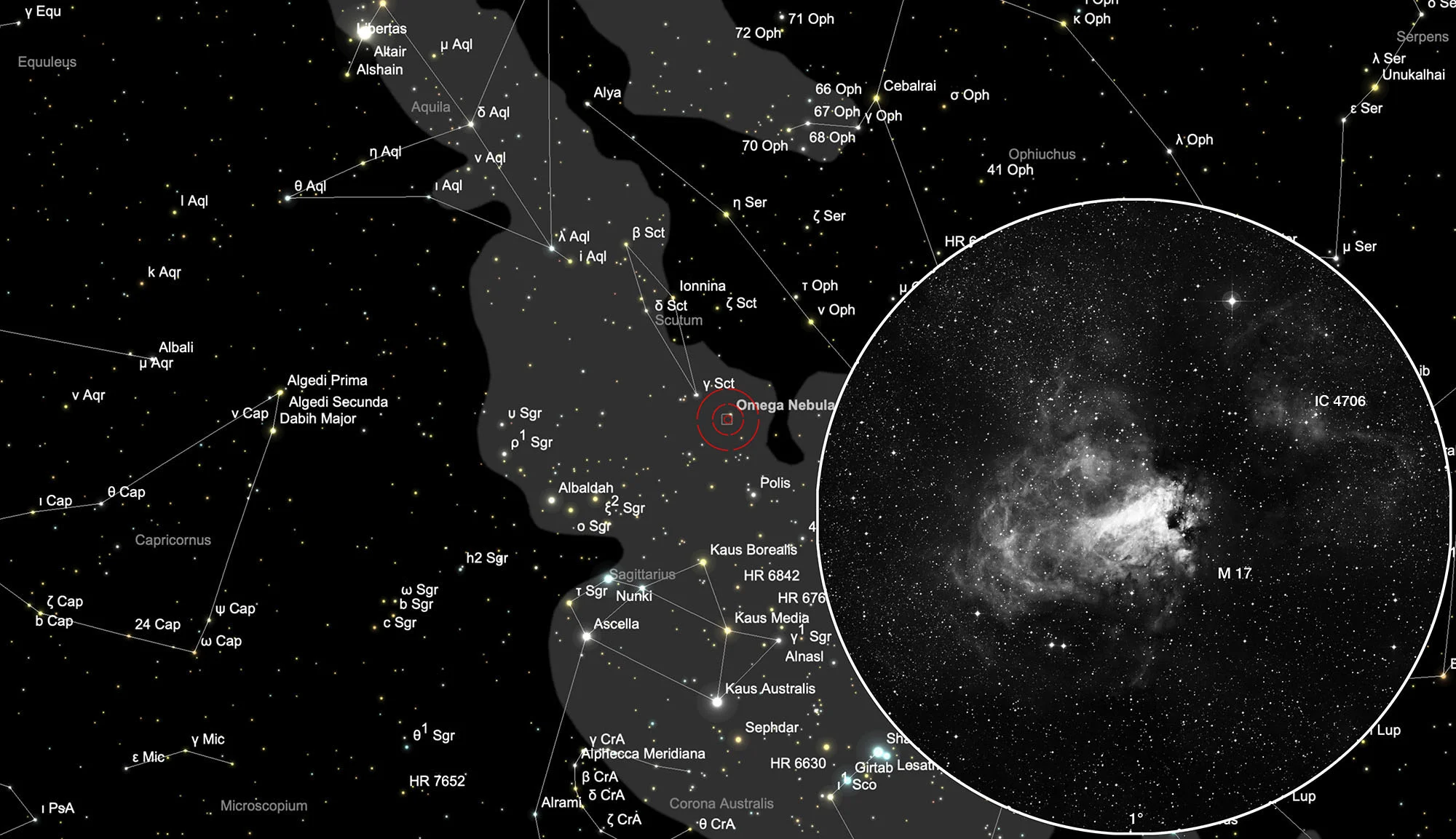Omega Nebula, Swan Nebula, Horseshoe Nebula (Messier 17)
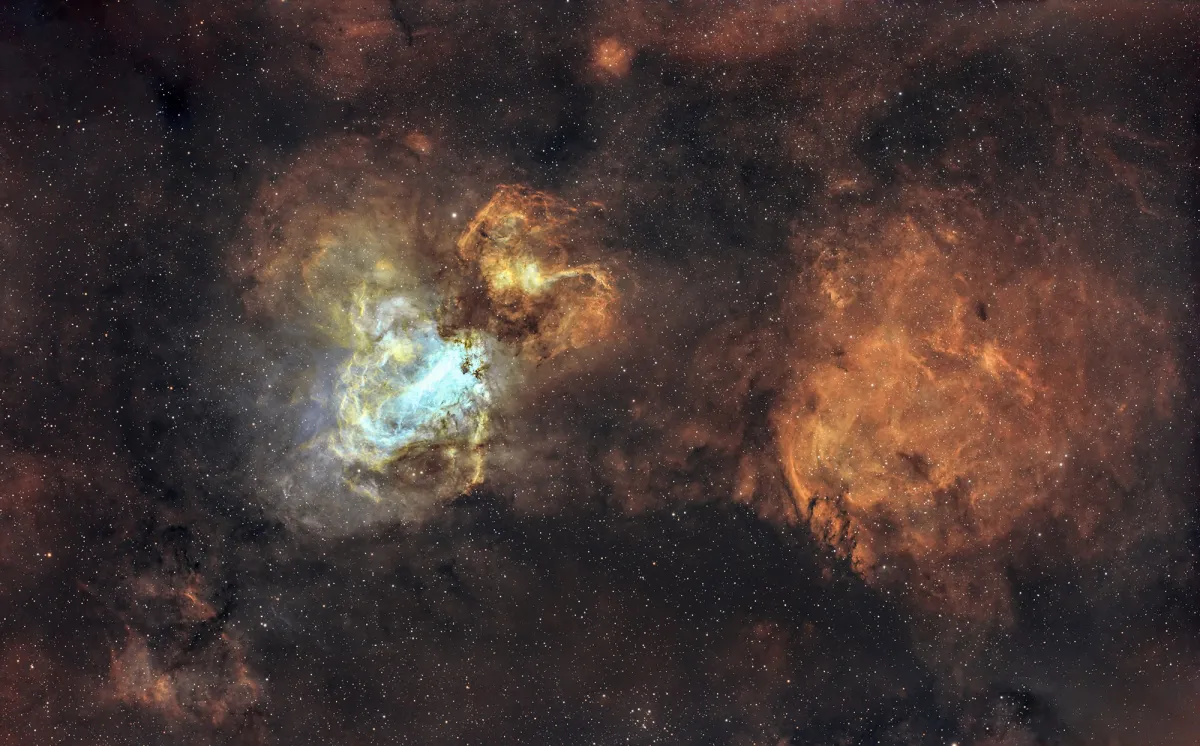
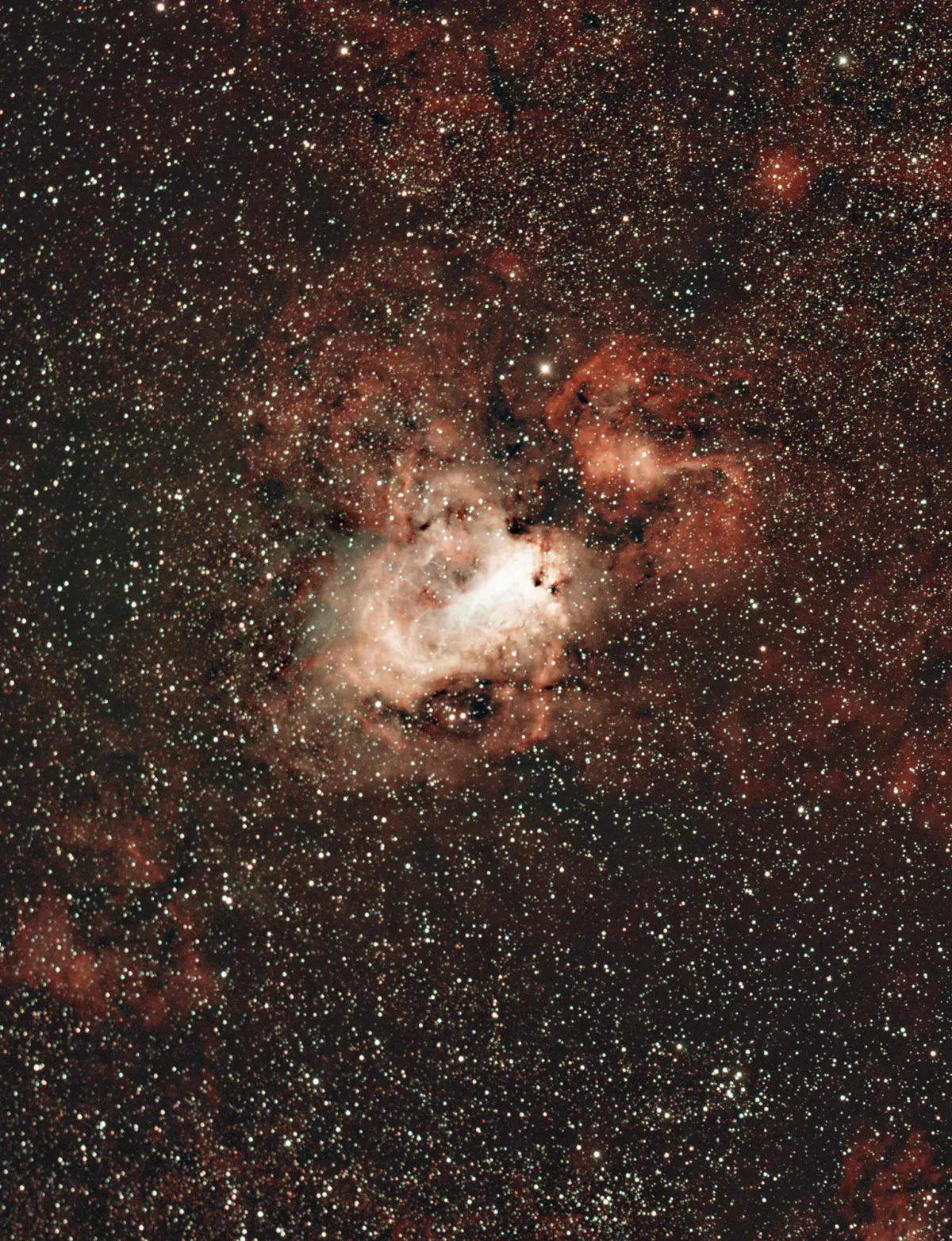
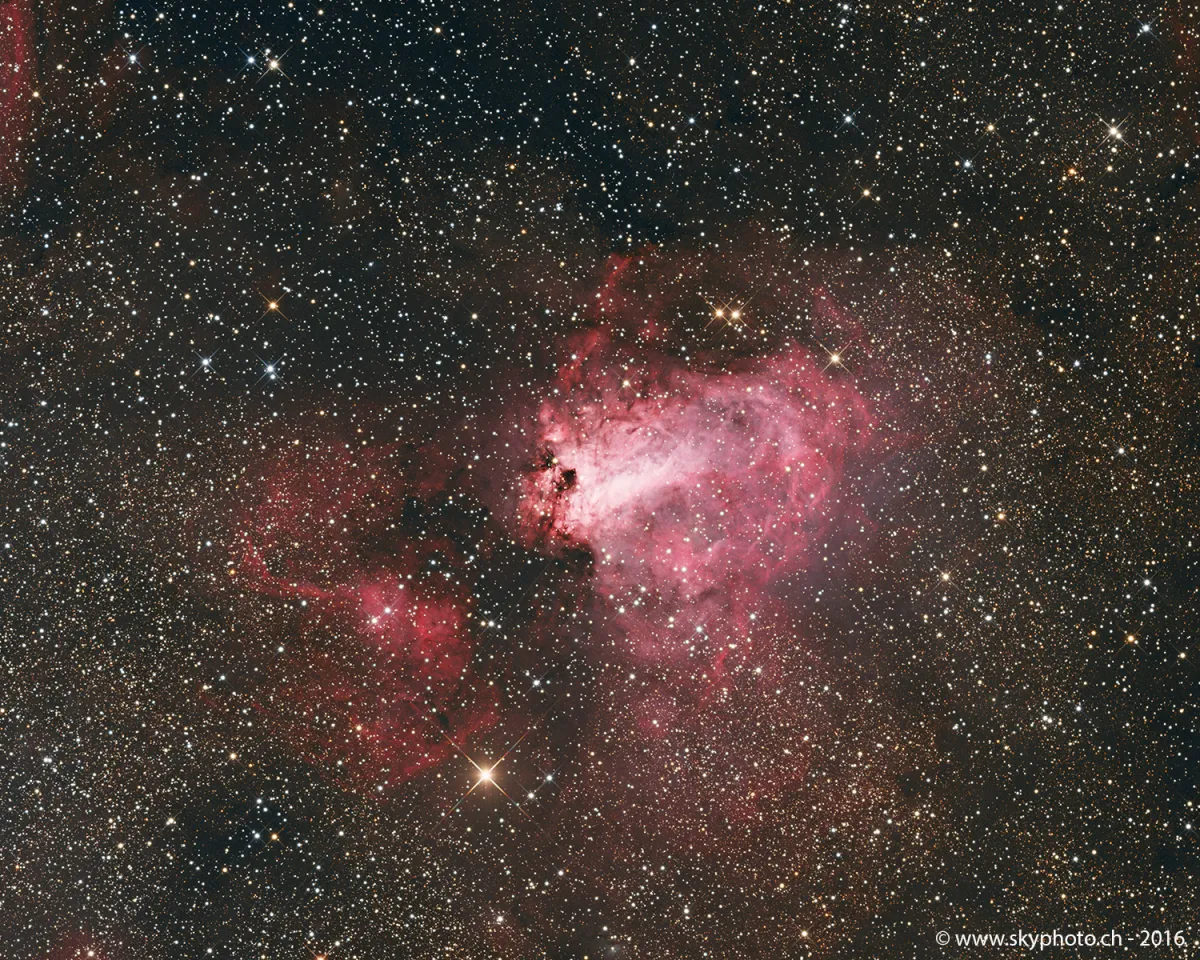

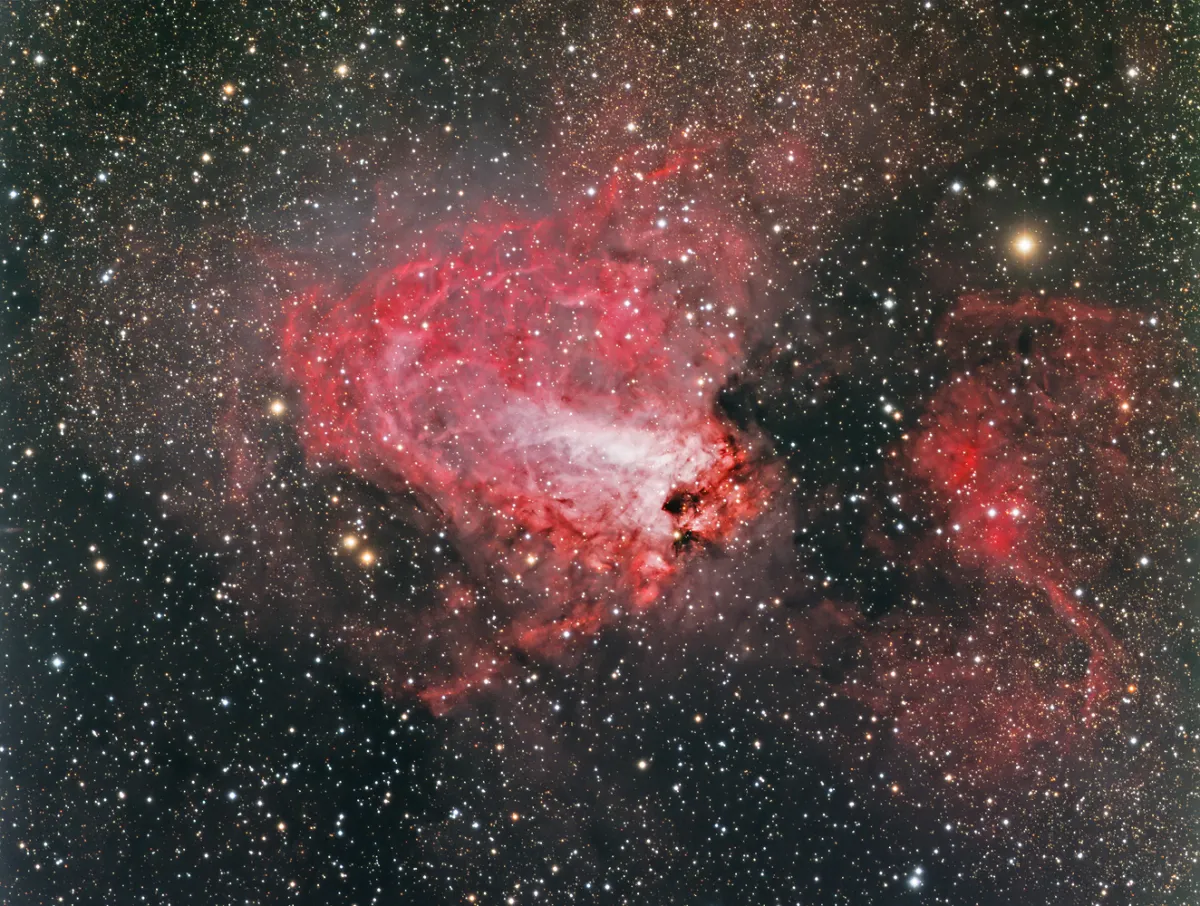
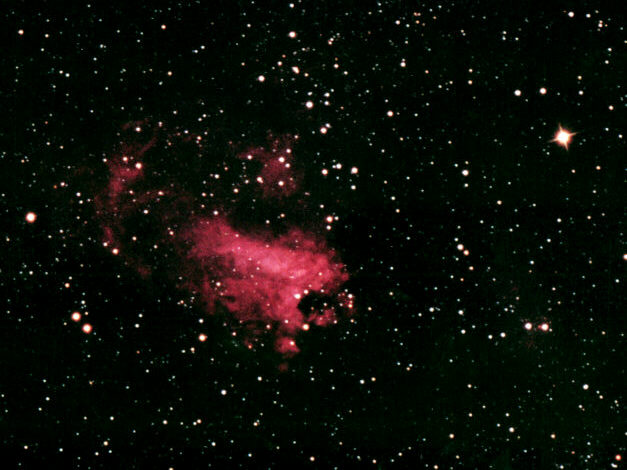
History
The diffuse nebula Messier 17 was probably first discovered by the Swiss astronomer de Cheseaux in 1764. Independently of this, Charles Messier discovered this nebula again in June of the same year. Due to its shape, the nebula received numerous names such as Swan Nebula, Omega Mebula, Horseshoe Nebula but also Tobacco Pipe.
Physical Properties
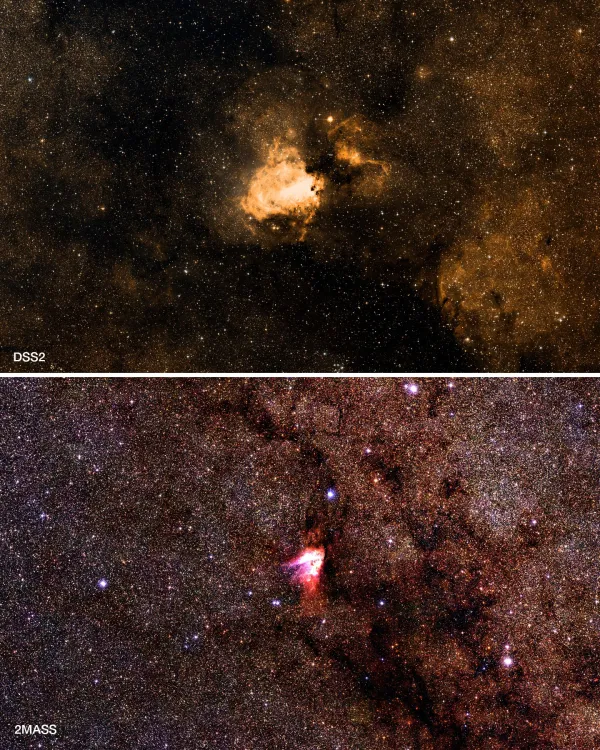
In contrast to the neighboring M 8, for example, this nebula does not contain a conspicuous star cluster, but it is interspersed with several stars from ninth size class over the entire field. It is possible that the main stars that stimulate the nebula to shine are obscured by dense masses of gas. According to a study from 1965, at least 35 stars belong to this nebula complex, which has enough mass to produce around 800 sun-like stars. Like many other nebulae, this one is also a source of strong radio emissions. According to distance estimates, the nebula is about 5700 light years away. According to this measurement, the diameter of the brightest part of the nebula, which forms the swan's body, is about 12 light years. Together with the weaker outer regions of the nebula, it has an extension of about 40 light years. [4]
IC 4706 a small, faint nebula around two stars of the ninth magnitude, about 20 arc minutes to the northwest of M 17. In Figure 3 (top picture) the two stars can be seen with the nebula at the top right. A section of the same location from the Two Micron All Sky Survey (2MASS) (lower picture) shows that this star-rich area is criss-crossed by dark clouds. One of them is in front of M 17. Thus IC 4706 is the same nebula as M 17.
| Name | RA | Dec | Type | bMag | Dim | MD | Dreyer Description | Identification, Remarks |
|---|---|---|---|---|---|---|---|---|
| NGC 6618 | 18 20 47.0 | -16 10 18 | EN+OCL | 6.0 | 20 × 15 | 1.700 | !!!, B, eL, eiF, 2 hooked | h 2008; GC 4403; M 17; OCL 44; LBN 60; Sh2-45; Omega nebula |
| IC 4706 | 18 19 36.0 | -16 01 54 | EN | 5 × 5 | 1.700 | * 9.2 in S neb, conn with M 17 | CED 160A |
Finder Chart
M 17 is located in the constellation Sagittarius. If you imagine a line from γ Scuti (4.7 mag) to μ Sagittarii (3.86 mag) and position the central Telrad circle on it as in the map below, M 17 should already be visible in a large field eyepiece. The best time to observe is February to December.
Visual Observation
400 mm Aperture: In the 21 mm Ethos eyepiece (85x), M 17 can already be seen without a filter as a strikingly bright nebula with many structures. The shape of the nebula is reminiscent of a swimming swan with a curved neck. In the 13 mm Ethos eyepiece (138x) and with an O-III filter, the dome of light over Milan can be eliminated and the nebula shines out against the dark sky background. The delicate dust bands stand out clearly, especially the dark nebula at the «swan's neck». — 400 mm f/4.5 Taurus Dobsonian, Falera, SQM 20.9, 19. 9. 2025, 21:10 MESZ, Bernd Nies
